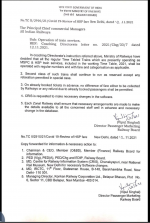Indian Railways Junction
- Thread starter Seiko
- Start date
You are using an out of date browser. It may not display this or other websites correctly.
You should upgrade or use an alternative browser.
You should upgrade or use an alternative browser.
Indian Railways Electrification: Rajdhani, Tejas Rajdhani to run on electric traction from Northeast to Delhi
For the introduction of AC electric traction to and from Indian Railways’ Guwahati station, CRS authorization has been received. The Guwahati station in Assam is Northeast’s busiest railway station. Now the Northeast city is connected with all metros as well as other big cities through 25KV AC traction. According to the Railway Ministry, the Northeast Frontier Railway has completed electrification work of 649 RKM / 1294 TKM from Katihar to Guwahati. This way, the NFR zone’s total High-Density Network routes (649 RKM) have been commissioned with Electric Traction. Now, this move will connect New Delhi to Guwahati on seamless Electric Traction. Following are some of the benefits that will be reaped due to the electrification of the railway sections:
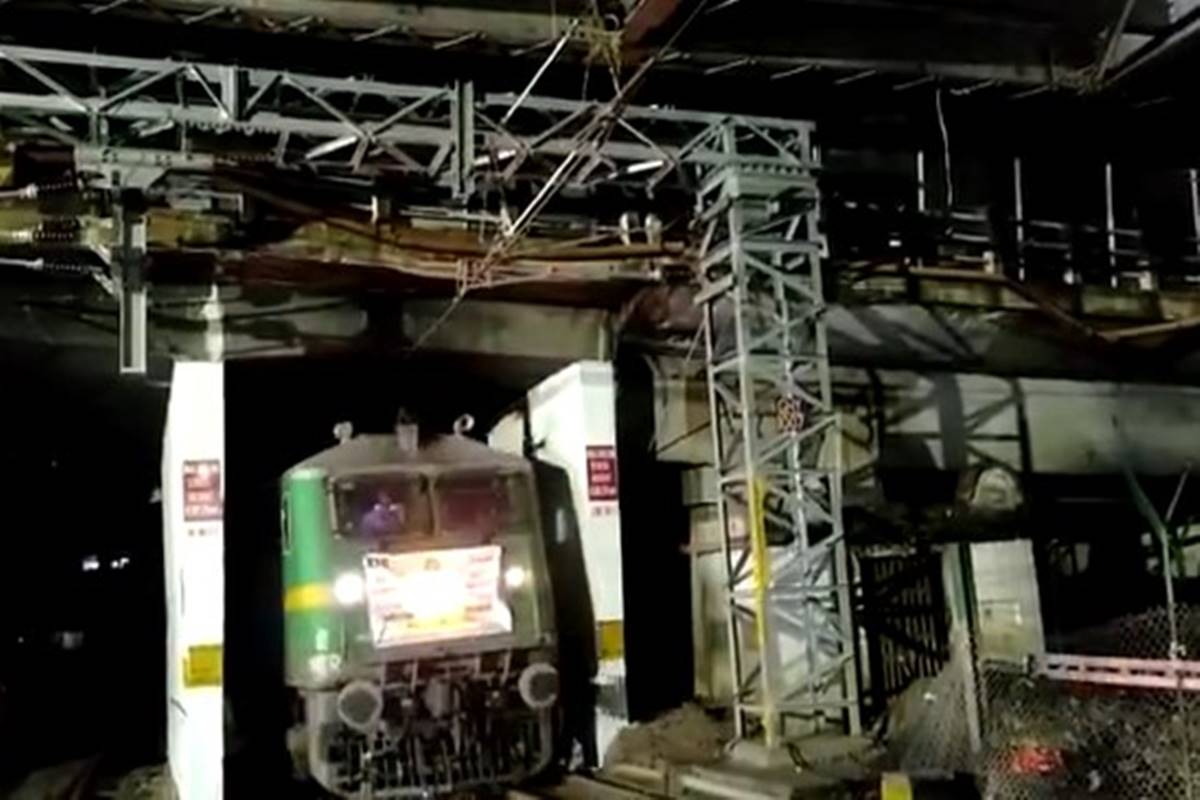
 www.financialexpress.com
www.financialexpress.com
For the introduction of AC electric traction to and from Indian Railways’ Guwahati station, CRS authorization has been received. The Guwahati station in Assam is Northeast’s busiest railway station. Now the Northeast city is connected with all metros as well as other big cities through 25KV AC traction. According to the Railway Ministry, the Northeast Frontier Railway has completed electrification work of 649 RKM / 1294 TKM from Katihar to Guwahati. This way, the NFR zone’s total High-Density Network routes (649 RKM) have been commissioned with Electric Traction. Now, this move will connect New Delhi to Guwahati on seamless Electric Traction. Following are some of the benefits that will be reaped due to the electrification of the railway sections:
- Indian Railways will be able to save on foreign exchange spent on HSD Oil to the tune of Rs 300 crore per annum.
- The consumption of HSD Oil by the national transporter will also be reduced by 3400 KL per month which will minimize dependence on imported petroleum.
- Because of seamless train operation, traction change which is inevitable at New Coochbehar and New Jalpaiguri, will now be done away with. This will enhance trains’ mobility.
- Because of enhanced mobility, the total running time between Katihar to Guwahati will be reduced by two hours (approximately) due to trains’ higher speed. As a result of this, nearly 10 per cent more number of trains can be run in the section.
- With the electrification of railways, heavier freight trains can be operated at higher speeds.
- Due to enhanced line capacity, 10 per cent new passenger trains can be introduced and this will help in the launching of more Rajdhani Express trains for capital connectivity projects.
- With electrification, dependence on imported petroleum will be reduced.
- With railway electrification, HOG technology can be utilized instead of EOG system with two power cars employing two DG sets on either end on all LHB coach fitted trains.
- During run, the power generator cars which consume nearly 100 litres diesel per hour can be saved apart from noise, fume emission.
- For electric traction, Greenhouse gas emissions will fall which will result in a reduced carbon footprint.

Indian Railways Electrification: Rajdhani, Tejas Rajdhani to run on electric traction from Northeast to Delhi
The Northeast Frontier Railway has completed electrification work of 649 RKM / 1294 TKM from Katihar to Guwahati.
Railway Electrification in full swing in South Western Railway

Indian Railways is electrifying its entire rail network to provide greener transport and reduce carbon footprint. In South Western Railway, Electrification work is in full swing. Rail Vikas Nigam Ltd. (RVNL) and Central Organization for Railway Electrification (CORE) are executing the Electrification works in jurisdiction of South Western Railway.
In the period from July 2020 to Mar. 2021, 477 Route Kilo Metres (RKM) of Electrification work has been completed in SWR and authorization of Commissioner of Railway Safety has also been received.
It includes 99 RKM between Rayadurga-Thalaku-Chitradurga, 103 RKM between Kariganuru-Harlapur-Hulkoti, 65 RKM between Hubballi and Alnavar, 85 RKM between Anekal-Periyanagathunai-Palakkodu and 125 RKM between Kudgi and Hotgi.
In the current Financial Year from Apr.2021, 122 RKM of Electrification has been completed so far. It includes 33 RKM between Alnavar and Londa, 33 RKM between Chitradurga-Chikjajur and 56 RKM between Chikbanavar and Tumakuru. Further, 570 RKM of Electrification is targeted for completion in current Financial Year ending by Mar.2022.
On 04.11.2021, Electric Loco Trial was conducted successfully between Hulkoti and Hubballi Bypass East (39 RKM).
76 RKM between Palakoddu-Sivadi-Omalur, 45 RKM between Yelahanka-Chikballapur, 20 RKM between Kalgurki-Wandal, 11 RKM between Londa-Tinaighat, 113RKM between Arsikere-Birur-Chikjajur, 61 RKM between Mysuru-Chamarajanagar, 48 RKM between Gadag-Hole Alur, 60 RKM between Tumakuru-Kardi, 47 RKM between Tinaighat-Castlerock and Kulem-Madgaon, and 44 RKM between Bangarpet- Srinivaspur are also targeted for Electrification in the current Financial Year.
Before 2017, only 208 RKM between Bengaluru and Jolarpettai was electrified in SWR. In the year 2016-17 electrification of 259 RKM, in 2017-18 electrification of 95 RKM, in 2018-19 electrification of 41.6 RKM and in 2019-20 electrification of 143.1 RKM have been completed.
Electrification has now been completed between Hubballi-Ballari and Ballari Rayadurga fully. The Electrification between Hubballi and Bengaluru line is expected to be completed by March 2023. As per targets, by December 2023, all the major routes of SWR will be electrified.
Recently, on 4th November, 2021 Shri Sanjeev Kishore, GM/SWR along with Shri P.K. Mishra, Additional General Manager & Shri Manoj Mahajan, Principal Chief Electrical Engineer conducted a meeting through Video Conference with DRMs of all the 3 Divisions, top officials of RVNL & CORE and directed them to give top priority to complete the Railway Electrification works as per targets. He reviewed the progress of works of foundation of masts, erection, wiring etc. as per action plan. He advised them to plan works targeted for current financial year for completion by Jan/Feb.2022.
Electrification of Railway lines besides being environment friendly, will also save foreign exchange reserves spent on High-Speed Diesel Oil.
In addition to above, passenger trains with higher speed & heavier goods trains can be run after Electrification of tracks.
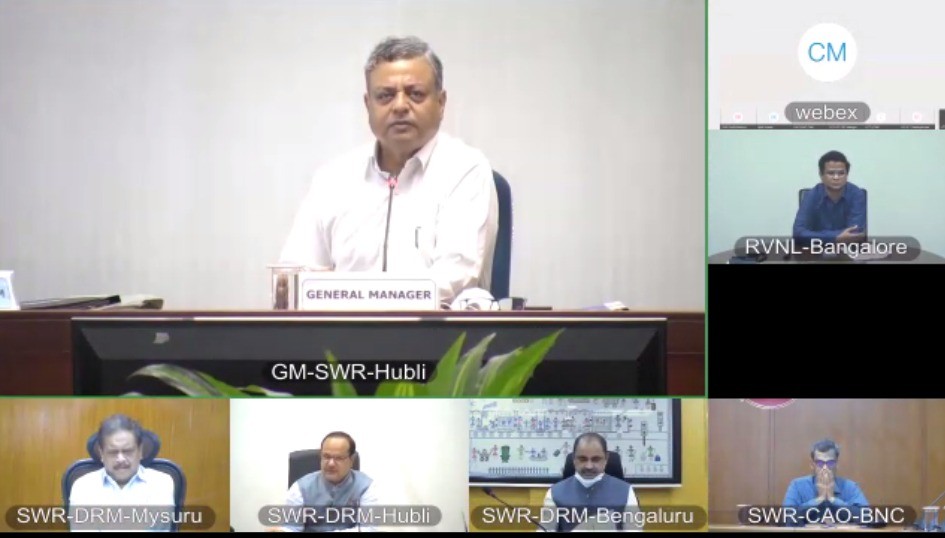
Railway Electrification in full swing in South Western Railway
692 RKM more targeted for electrification by Mar 2022 in SWR
The first one 10001 was using the Alco cabs only.
One is rolled out from Banaras, other from Patiala.
If this completes performance tests satisfactorily and the supply chains are determined to be economically feasible we will be able to save lots of WDG3A locomotives from scrapping , most of them have lots of lives left. Some 20+ years.
Although usage of DC motors will find some opponents, but retention of the DC motors will save cost.
If this completes performance tests satisfactorily and the supply chains are determined to be economically feasible we will be able to save lots of WDG3A locomotives from scrapping , most of them have lots of lives left. Some 20+ years.
Although usage of DC motors will find some opponents, but retention of the DC motors will save cost.
Passenger fares across the Indian Railways likely to come down by about 15%
Passenger fares across the Indian Railways are expected to come down by around 15 per cent with the normalization of services.According to officials in the know, other offerings such as cooked food and cheaper platform tickets may not resume immediately in the light of measures to continue containing the COVID-19 pandemic. “The special trains that were initiated during the COVID-19 pandemic are being replaced by normal train services. This would result in lowering of passenger fares to the tune of around 15 per cent across the board,”
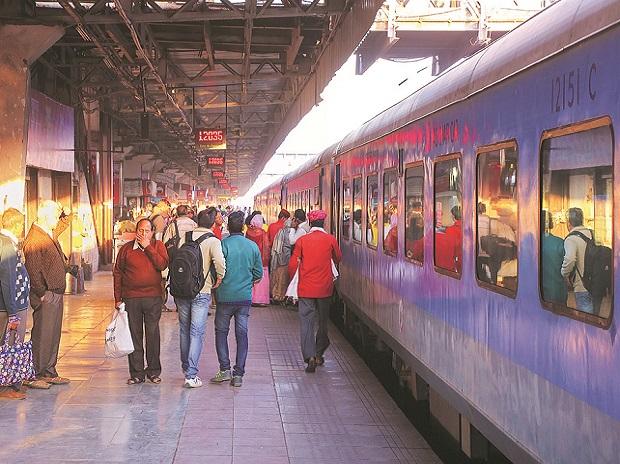
Passenger fares across the Indian Railways likely to come down by about 15%
Curbs on cooked food, over-the-counter ticket sales remain
Railways Likely To Convert Unreserved General Second Class Into Reserved AC General, With Slightly Higher Fare
After introducing AC Economy Class, Indian Railways is firming up plans to convert General Second Class compartments of long distance trains into AC coaches to make the journey comfortable for the common man.According to the plan, General Class compartments will become reserved AC coaches with seating arrangements for about 120 passengers.
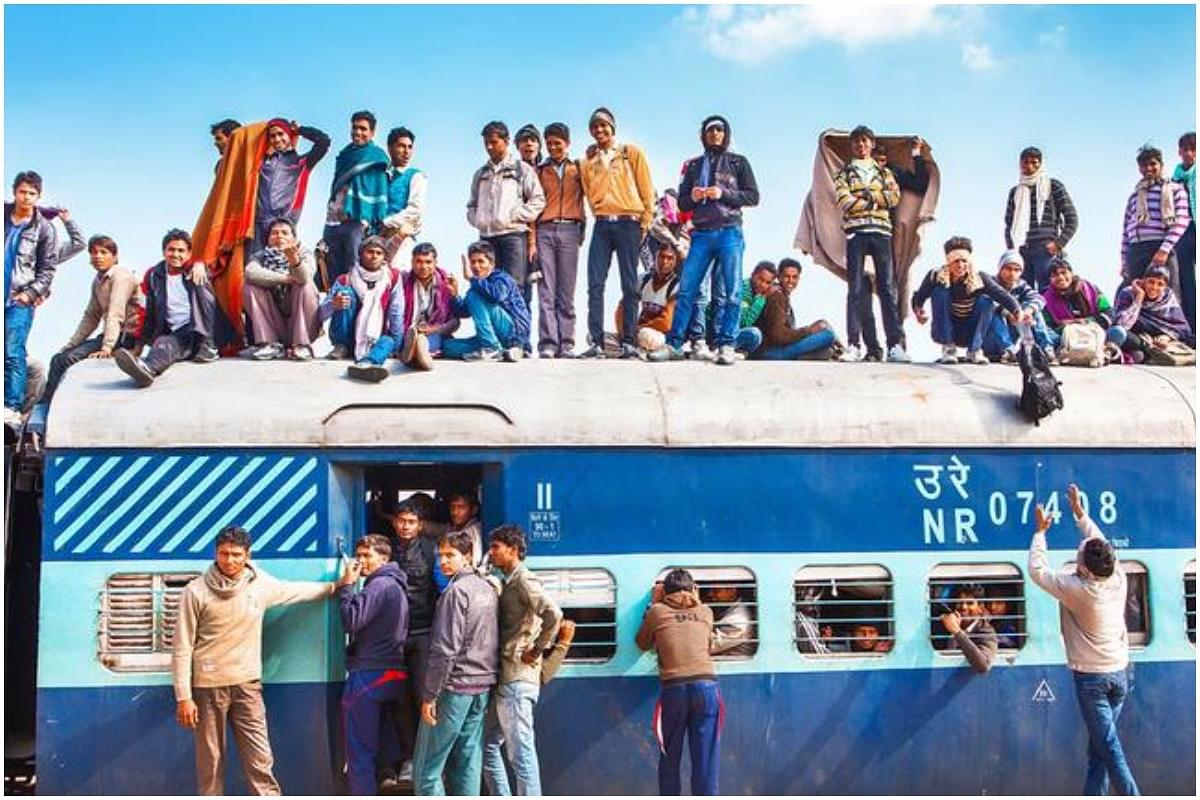
Railways Likely To Convert Unreserved General Second Class Into Reserved AC General, With Slightly Higher Fare
According to the plan, General Class compartments will become reserved AC coaches with seating arrangements for about 120 passengers.Once it becomes the AC General Class, the fare is also likely to be a little more than the earlier non-AC unreserved fare.
swarajyamag.com

